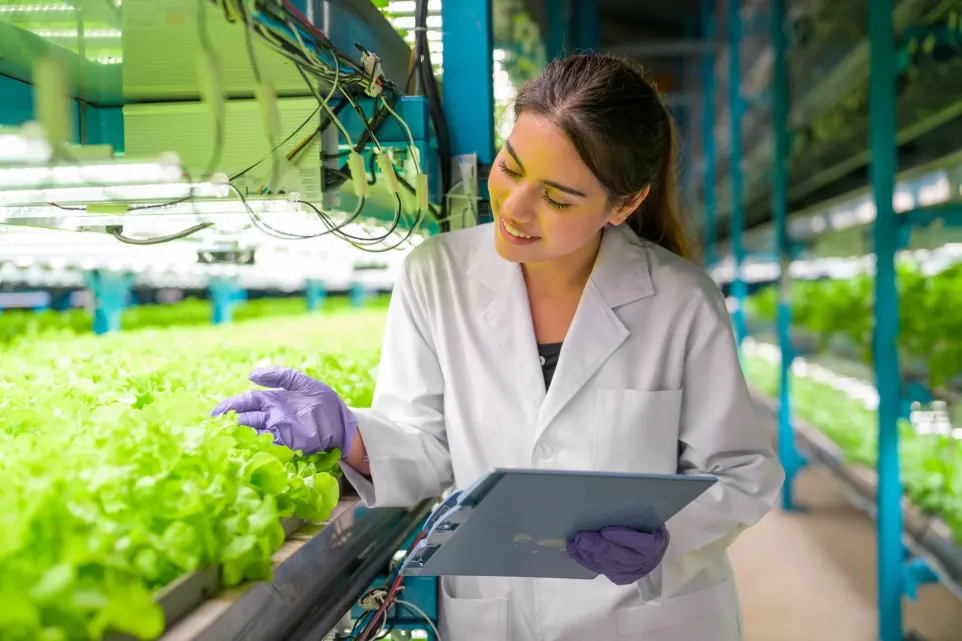Welcome to the Plant Health International Website
Plant Health International is dedicated to sharing information and understanding of the fundamentals, theory, practice, and benefits of plant health and plant health management.
Plant health management
Plant health management is the science and practice of understanding and eliminating the succession of biotic and abiotic factors that limit plants from achieving their full genetic potential as crops, ornamentals, timber trees, or other uses. Although practiced as long as agriculture itself, as a science-based concept, plant heath management as a science is even younger than integrated pest management (IPM), and includes and builds upon but is broader than IPM.

Managing Diseases, Advancing Plant Health.
Probably the greatest collection of success stories for plant health management is the number of diseases managed by cleaning up the seed or other planting material of pathogens carried internally or externally. The record for root health management is more mixed, with the loss or phase-out of soil fumigants, and practices such as crop rotation and clean tillage being replaced with more intensive cropping and less or no tillage.
Arguably, the greatest scientific and technical advances for plant health management have come from the work aimed at management of the pathogens, pests, and other hazards that arrive by air, mainly through combinations of adjustments in planting date and use of host plant resistance and fungicides. Research aimed at the management of foliar pathogens is also the basis for modern theory on epidemiology, population biology, aerobiology, and disease prediction and decision-support systems. Even IPM arose mainly in response to the need to protect crops from pests that arrive by air.
A Moving Target.
Plant health management is a moving target and can be viewed metaphorically like an American football game, where one team is science and technology and the other is nature, where the S & T team is only beginning to know nature’s rules while playing itself with the three sets of rules written to, respectively, satisfy the laws of economics, protect the environment, and gain social acceptance.
The Centerpiece of Plant Disease Control.
Biological Control includes the use of natural or modified organisms, genes or gene products to reduce the effects of undesirable organisms (insect pests, plant pathogens, plant parasitic nematodes, weeds) and to favor desirable organisms such as crops, trees, animals and beneficial insects and microorganisms. (National Academy of Sciences Report of the Research Briefing Panel on Biological Control in Managed Ecosystems, National Academy Press, 1987.)
This broad concept of biological control is adopted here for plant pathogens. It includes the use of cultural practices such the rotation of crops to allow time for the natural resident soil microbiota to lower the population of the soilborne pathogens of one crop while growing a different and unrelated crop. It also includes the use of genes and gene products whether delivered through host plant resistance or plant-associated microorganisms.

Biological control is contrasted with physical control, which includes steam, soil solarization, flooding, desiccation, electrocution, or physically separating the pathogen from the plant by meristem culture. Chemical control includes the use of synthetic and natural chemical products to inhibit or kill pathogens.
Biological control attained through its many applications and practices should be the centerpiece of plant disease control, while taking advantage of opportunities for physical control judiciously combined with chemical control.

What are Genetically Engineered (GE) Crops and is Food From These Crops Safe?
The rate of adoption of genetically engineered crops by farmers once approved by the federal government has been as fast or faster than the rate of adoption of new smartphones, apps, and GPS by the general public, and for the same reasons: these modern technologies bring value and convenience to the user.
However, whereas the public and even children understand and are comfortable using the new communication technologies, a general lack of public understanding of the new biotechnologies applied to our food and feed crops has fostered suspicion and even fear of potential unknown effects on our health and the environment.
What are genetically modified (GM) organisms and GM foods?
Genetically modified foods, also known as genetically engineered (GE) and genetically modified organisms (GMOs), are foods from crops with traits added by the “cut-and-splice” transfer of DNA from another organism. The means to add traits by this method of DNA transfer dates back to the early 1970’s discovery of enzymes that can cut and splice DNA.
Government-approved GE crops grown in the U.S. today are corn, soybeans, canola, sugar beets, cotton, alfalfa, papaya, and squash. GE varieties of corn, canola, and alfalfa are currently grown in Washington State.

Why did GMOs arise and what is their purpose?
All GE crops grown today in the U.S. and Canada were developed to provide a safer, more effective, or more economical means to control weeds, insect pests, and diseases. Keeping crops healthy and weed-free is the biggest challenge farmers face year after year.
In each case, a single gene has been added to the genetic code of the crop plant to produce a protein that, in effect, immunizes that crop to attack by an insect pest or infection by a plant virus, or allows the crop to be sprayed with an herbicide such as glyphosate (Round-up) that kills weeds but not the crop. This “immunization” is different than the immunization we receive when vaccinated, but the effect for the crop plant is the same.
GE soybeans, sugar beets, canola, and alfalfa have immunity to an herbicide, of which 80% is to Round-up. Round-up is one of the few herbicides safe enough to be approved for home use. Non-GE varieties of these crops require several different herbicides to control the same weeds, still leaving some weeds uncontrolled.
GE cotton and corn produce a protein known as Bt that, when ingested by the insect pest, causes the insect to stop eating and starve. In spite of extensive testing, this protein has been shown to have no effect on laboratory animals, when consumed as part of their food. The same protein sprayed on plants for insect control is approved for organic certification.



